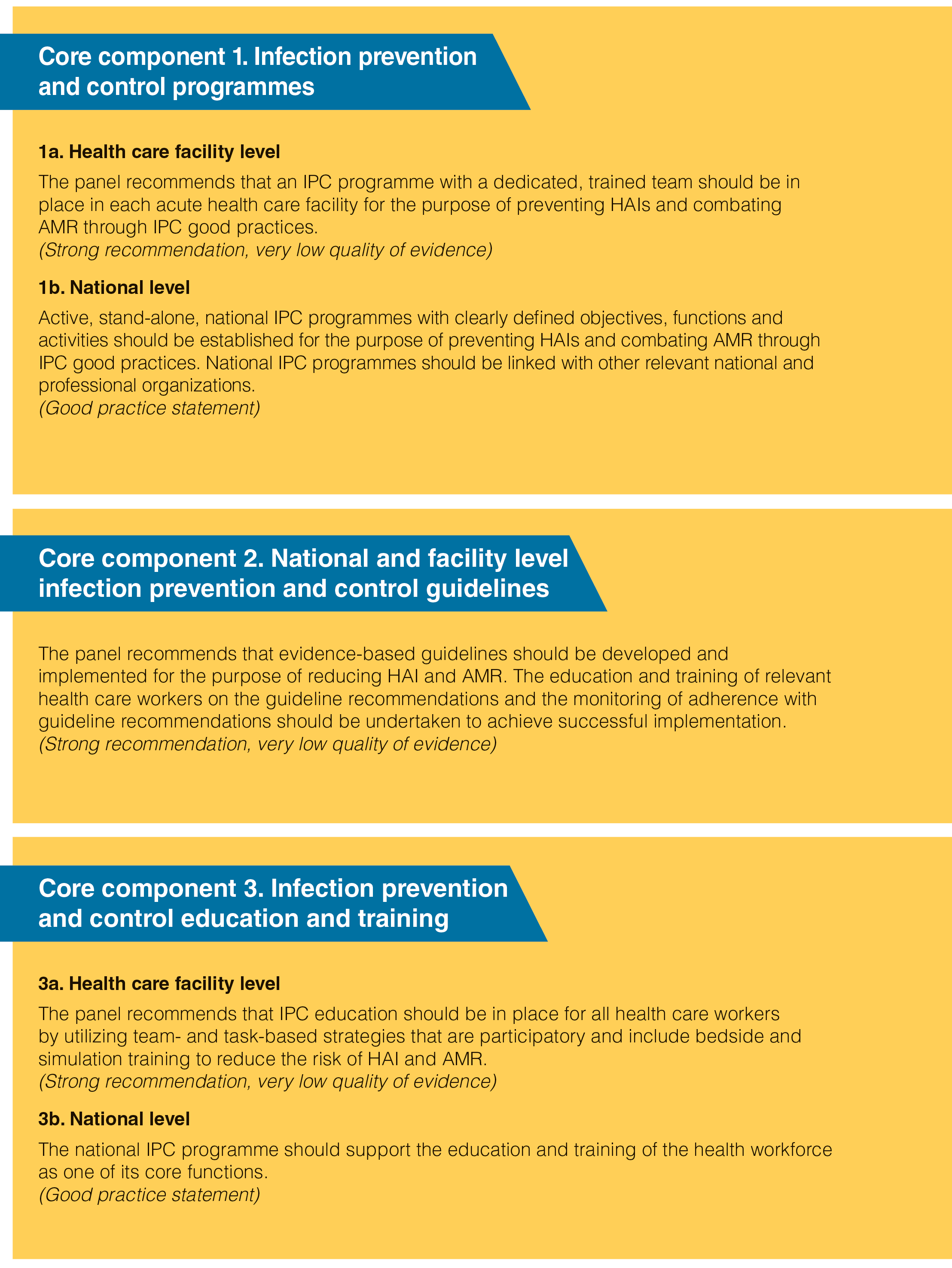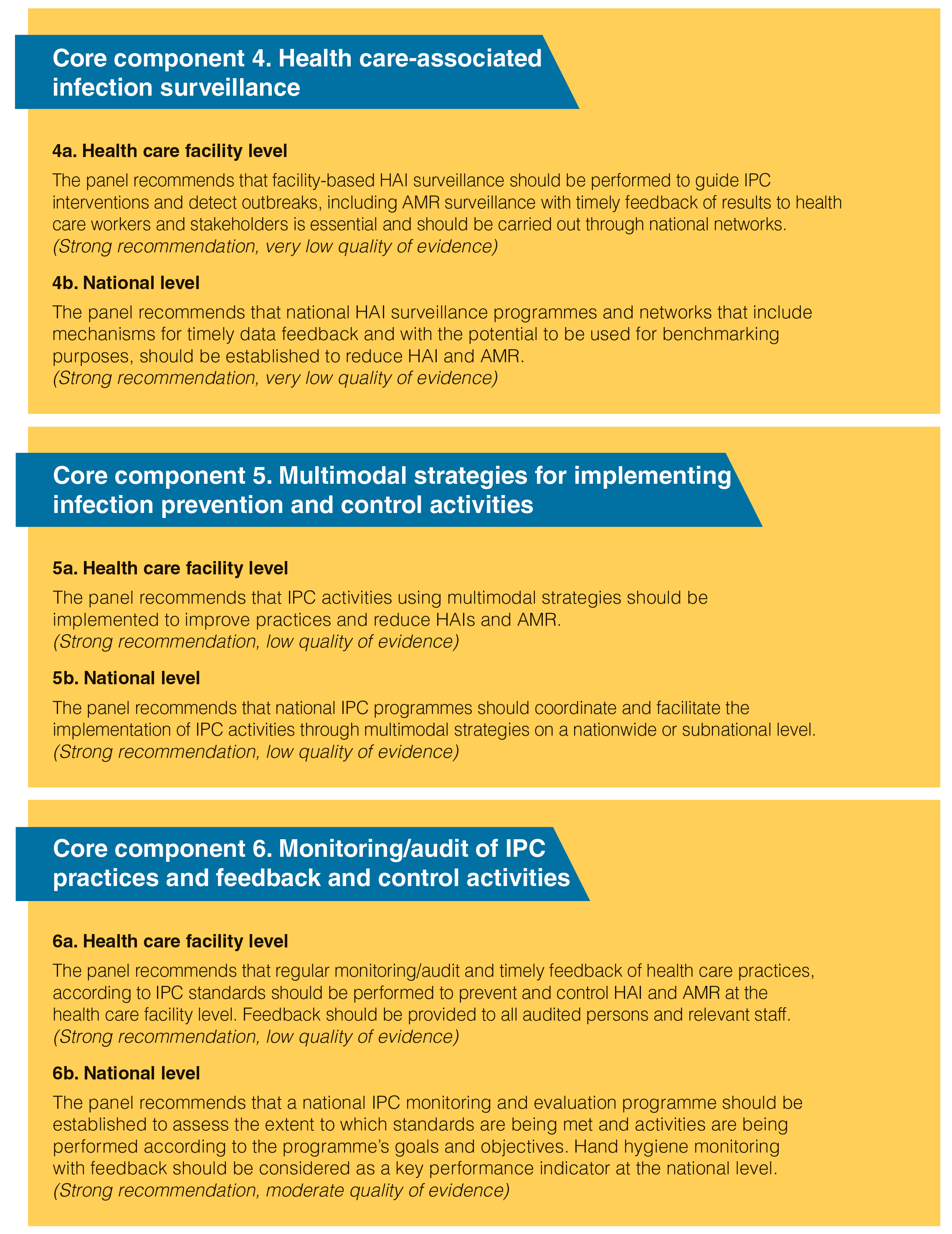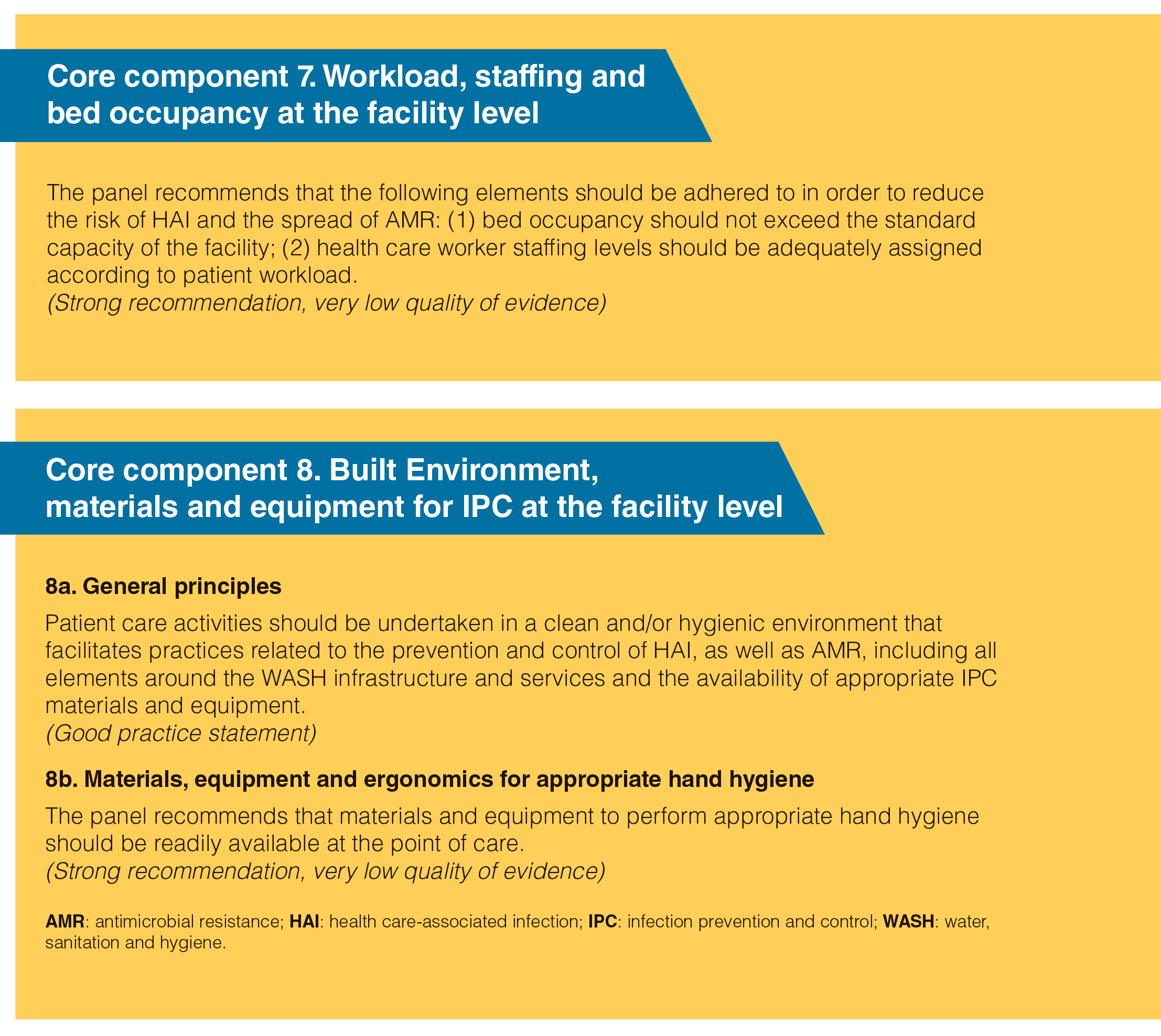Book traversal links for 3. Core components of IPC programmes
The threats posed by epidemics, pandemics and AMR have become increasingly evident as ongoing universal challenges, and they are now recognized as a top priority for action on the global health agenda. Effective IPC is the cornerstone of such action. The International health regulations position effective IPC as a key strategy for dealing with public health threats of international concern (70). More recently, the United Nations Sustainable Development Goals (SDGs) highlighted the importance of IPC to safe, effective, high-quality health service delivery and universal health coverage.
In 2016, the WHO Department of Service Delivery and Safety issued a set of guidelines on core components of IPC programmes (13). These core components were founded on earlier recommendations issued in 2009 (7), and work done by the systematic review and evidence-based guidance on organization of hospital infection control programmes (SIGHT) study group (71).
The goal of the 2016 guidelines was to provide the most recent evidence-based recommendations and good practice statements on the core components of IPC programmes that are required at the national level (including various levels within the health care structure) and acute health facility level, with the aim of addressing current and preventing future threats, strengthening health service resilience and helping to combat AMR (13, 72). The 2016 guidelines are also intended to support countries in the development of their own national protocols for IPC and AMR action plans, and to support health care facilities as they develop or strengthen their own approaches to IPC. In the context of M. tuberculosis transmission, the importance of these core components lies not only in the potential for building effective and sustainable TB IPC programmes at national and facility levels, but also in the potential to strengthen and integrate TB infection control practices with local and national IPC programmes.
The eight core components combine 11 recommendations and three good practice statements developed in a separate WHO guideline development process. They provide information based on evidence and expert consensus that is necessary to establish an IPC programme. Although the core components are focused on prevention of HAIs, infections with epidemic potential and AMR, their implementation should be included in all IPC programmes, and they should underpin activities aimed at preventing and reducing HAI and AMR, including TB. The core components from the guidelines are given below (13).
Since TB is exclusively transmitted by the airborne route, specific administrative, environmental and personal protection measures for airborne infection should be implemented, in line with evidence-based recommendations provided in the relevant chapters of the guidelines on TB prevention and control.



 Feedback
Feedback